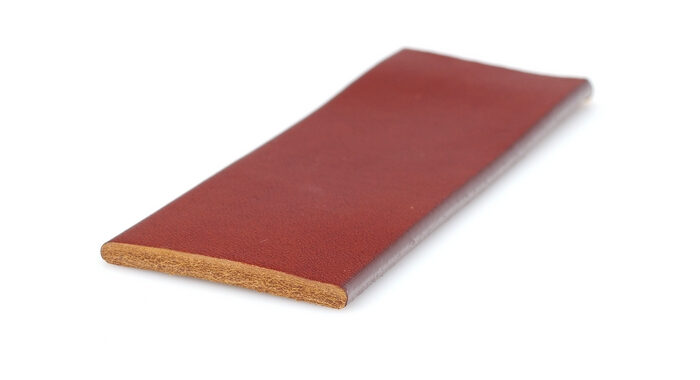Bombato or flat?
- Last modified:
Customers often ask us about belts durability, suggesting one type is better than the other. Which one is better? What is more comfortable?

Flat and bombato belts
Reading your emails we see how many myths and ambiguities there are. I'll try to explain the differences and point out important characteristics of our belts.
Flat belt - cut from a single piece
Usually made from thick leather, tanned with natural substances. Edges are smooth thanks to grinding and polishing.

Flat belt cross section
Material for this type of belt is cut along the natural fibers. It makes belts resistant to stretching.
Sometimes the belt may feel a bit stiff at first, but material stresses disappear quickly and the belt starts fitting owner's waist. Additional leather features — such as sweat absorption, breathing, resistance to cracking and crumbling — increase the value of the leather belt.
Bombato belt
Bombato belts are made from two layers — outer, grain-facing part, and inner genuine leather part. Before gluing, both layers are treated mechanically and their the edges are chamfered. Thanks to that, after bonding the layers we get a belt with tight and thin edges. The belt looks solid, yet it's soft and comfortable. It's lens-like shape improves the looks, and the belt looks great, e.g. with formal trousers.

Bombato belt cross section
Gluing two layers together increases belt's durability. Each part has different pattern of fibers and different resistance to stretching. Bonding them together makes a belt of unusual endurance. The use of specialist industry adhesives guarantees the long-term life of the finished product. All bombato belts are covered by a lifetime glue guarantee.
Other bombato belt features are similar to flat belt. Choosing one over another is a matter of personal style, without compromising on durability or comfort.
